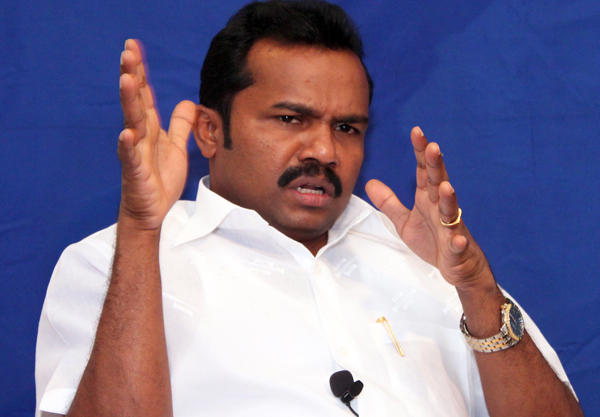Reply To:
Name - Reply Comment
Last Updated : 2024-04-16 12:19:00

(1)(1)(1)(1)(1)(1).jpg) Ten years have passed since the once dreaded LTTE experienced an internal politico-military revolt spearheaded by its erstwhile Eastern regional commander Vinayagamoorthy Muralidharan alias “Col”Karuna. The revolt lasting six weeks from March 3 to April 11, 2004 was ruthlessly suppressed through military means by the mainstream LTTE led by Tiger supremo Velupillai Prabhakaran. Hundreds of eastern cadres were killed in the internecine warfare that debilitated the LTTE considerably.
Ten years have passed since the once dreaded LTTE experienced an internal politico-military revolt spearheaded by its erstwhile Eastern regional commander Vinayagamoorthy Muralidharan alias “Col”Karuna. The revolt lasting six weeks from March 3 to April 11, 2004 was ruthlessly suppressed through military means by the mainstream LTTE led by Tiger supremo Velupillai Prabhakaran. Hundreds of eastern cadres were killed in the internecine warfare that debilitated the LTTE considerably..jpg) Karuna himself fled to the “Sinhala” South in search of safety. Several of Karuna’s loyal cadres and supporters including his own brother were hunted down by the LTTE. The cocky Tigers by conducting a prolonged witch hunt against Karuna left him no choice other than to seek security from the Sri Lankan state security apparatus itself
Karuna himself fled to the “Sinhala” South in search of safety. Several of Karuna’s loyal cadres and supporters including his own brother were hunted down by the LTTE. The cocky Tigers by conducting a prolonged witch hunt against Karuna left him no choice other than to seek security from the Sri Lankan state security apparatus itself.jpg) Even as an uneasy standoff prevailed between the main LTTE and the Eastern Tigers both sides began preparing for the soon to be confrontation. The military balance between Karuna and the mainstream LTTE at that juncture was quite interesting and precariously fluid. The cadre strength of the actual LTTE without auxiliaries was about 25,000 then
Even as an uneasy standoff prevailed between the main LTTE and the Eastern Tigers both sides began preparing for the soon to be confrontation. The military balance between Karuna and the mainstream LTTE at that juncture was quite interesting and precariously fluid. The cadre strength of the actual LTTE without auxiliaries was about 25,000 then.jpg) On March 25, 2004 the LTTE declared war on Karuna by issuing a statement. It stated in Tamil that to ‘safeguard our nation and people it has been decided to get rid of Karuna from our soil. Anybody who opposes disciplinary action against Karuna will be considered to be a traitor to our cause’
On March 25, 2004 the LTTE declared war on Karuna by issuing a statement. It stated in Tamil that to ‘safeguard our nation and people it has been decided to get rid of Karuna from our soil. Anybody who opposes disciplinary action against Karuna will be considered to be a traitor to our cause’.jpg) Karuna’s political headquarters “Thenagam” was at Karadiyanaaru and military headquarters “Meenagam” at Tharavai. His own jungle hideout “Marutham” was at Kudumbimalai
Karuna’s political headquarters “Thenagam” was at Karadiyanaaru and military headquarters “Meenagam” at Tharavai. His own jungle hideout “Marutham” was at Kudumbimalai.jpg)

Add comment
Comments will be edited (grammar, spelling and slang) and authorized at the discretion of Daily Mirror online. The website also has the right not to publish selected comments.
Reply To:
Name - Reply Comment
On March 26, a couple arriving from Thailand was arrested with 88 live animal
According to villagers from Naula-Moragolla out of 105 families 80 can afford
Is the situation in Sri Lanka so grim that locals harbour hope that they coul
A recent post on social media revealed that three purple-faced langurs near t
09 Apr 2024 - 1 - 1165

10 Apr 2024
09 Apr 2024